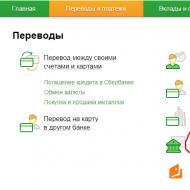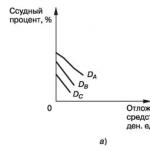
What is an unsecured bank loan? Secured loans. How is the loan secured?
Financial institutions can offer potential borrowers a wide selection of loan products, which can be divided into secured and unsecured forms of borrowing funds.
The difference between these lending methods is the presence of collateral, surety or other methods of guaranteeing the transaction. Borrowers are usually interested in unsecured loans because of their simplified processing, but from a financial point of view, a secured loan is much more profitable.
Unsecured loans involve borrowing money without providing any guarantees, including collateral or a guarantor. This popular form of financing attracts the attention of borrowers interested in quickly completing a transaction.
Unsecured loans:
- Do not require personal property or assets to be provided as security.
- They have high interest rates.
- Suitable for short-term financing.
- Issued by banks, microfinance organizations, private lenders and credit unions.
- They have restrictions regarding the loan amount and the duration of the agreement.
- Issued based on a calculation of the level of creditworthiness.
- Issued within one banking day.
Popular types of unsecured loans include most personal loans. This category of financial services includes consumer, student and medical loans. Fast loans and credit cards deserve special attention.
The presence of targeted financing allows the borrower to reduce lending costs, and speeding up the application review process, on the contrary, is one of the main reasons for increasing interest rates.
Secured lending
Secured loan– one of the most profitable forms of financing for both the borrower and the lender. By providing collateral, making a down payment or engaging a guarantor, a potential client guarantees the repayment of the debt, thereby increasing the level of trust among bank employees.
Secured loans:
- Provided only after official confirmation by the borrower of guarantees.
- They assume the use of personal property as collateral.
- They feature low interest rates.
- Seen by banks, pawn shops and private lenders. MFOs do not provide secured loans.
- They offer high credit limits and long contract terms.
- Reduce the level of risk for the lender.
- They are issued at the office of the financial institution a few days after receipt of the application.
The main types of secured loans include mortgages and auto loans.
In the vast majority of cases, such forms of financing are long-term in nature. Loans for 5, 10, 15 or more years can be obtained only after providing guarantees, since the lender in this case reduces the risk indicator. By the way, you can use the property itself, for the acquisition of which a loan is issued, as collateral. Additionally, insurance is required, for which funds will have to be allocated.
Unsecured or secured loans?
When choosing between secured and unsecured financing, the borrower must consider personal needs and current financing conditions. If in doubt, you should contact an experienced financial manager who will give several recommendations regarding the conclusion of the transaction.
The choice of lending method is influenced by:
- The state of the credit history and the level of financial consciousness of the borrower.
- Availability of property that can be used as collateral.
- Targeted nature of financing.
- Possibility to attract a guarantor.
- The presence of overdue payments and outstanding loan obligations.
- The current level of regular income and the debt repayment scheme chosen based on it.
If the borrower has property that can be offered as collateral, he can independently choose between a secured and unsecured lending scheme. You will have to give preference to the first method to obtain a long-term large loan. When it comes to medium- and short-term forms of financing, the choice can be made on an unsecured form of lending.
Transaction support
The procedure for obtaining an unsecured loan is based on studying the parameters of the client’s solvency, therefore, to obtain such a loan, you must first provide an extensive package of documents, including a certificate of income and a bank account statement.

Supporting a secured loan transaction also involves processing a large number of documents, but in this case, employees of a financial institution may partially or completely ignore the scoring procedure.
If in order to receive an unsecured loan, the borrower’s rating must exceed 600 points, then clients with lower scores are allowed to receive secured lending, because they additionally guarantee the return of money by providing collateral or attracting a guarantor.
Debt collection
The risk of loss of property in the case of unsecured lending is significantly reduced because the borrower does not provide collateral. If real estate, household appliances, jewelry, cars or other assets are used as collateral for a loan, such assets may be seized and sold to repay the loan. Creditors begin this method of compensation for losses only after the transaction has been awarded the status of hopeless.

The debt collection scheme for an unsecured loan differs from the recovery mechanisms in the case of secured lending, since the parties do not sign a collateral agreement. To recover damages, a financial institution first goes to court.
After a lengthy trial, the financial institution's claim will most likely be satisfied. In this case, confiscation of property is awarded for the purpose of further resale of assets to pay off debts.
How to apply for a loan?
Since an unsecured loan is backed only by the borrower's promise to repay the debt obligation, the process of applying for this loan is significantly simplified compared to secured forms of lending.
In addition to filling out the questionnaire, the potential client will have to provide information regarding the state of his credit history. Financial institutions involved in issuing unsecured loans also pay attention to calculating the credit rating.
During the transaction process, potential borrowers must prove that they receive income sufficient to repay their debt obligations. In addition to a certificate of income, you can provide a bank account statement, a certificate from a pension fund or tax returns for self-employed citizens.
Customers applying for loans must:
- Complete the application using accurate personal information.
- Allow credit check by processing income statement.
- Provide documentation confirming solvency.
- Leave your contact details.
- Conclude a collateral agreement or provide information about the guarantor if it comes to secured lending.
Processing of applications in online lending systems is completed automatically thanks to the use of specialized utilities. When it comes to consumer lending, card issuance, mortgages, car loans or other types of classic medium- and long-term financing, managers are involved in checking questionnaires. Their main task will be credit scoring, that is, assessing the level of solvency of the borrower.
The applicant learns about the lender’s decision immediately after the application processing stage is completed. Notification is sent in writing to the email address specified in the application form. Credit managers can also communicate the decision during a personal conversation over the phone.
Based on the requirements for the borrower and data regarding the assessment of the correctness of filling out the application, the financial institution can approve or reject the loan application. Clients can resubmit the application if errors were made while completing it.
An unsecured loan is a loan that did not have collateral or the actual value of the collateral was less than 60% of the loan amount.
Risk group 1, “standard loans,” included loans for which the principal debt was repaid in a timely manner and in full, including loans extended in accordance with the established procedure, but not more than two times, as well as secured loans overdue by up to 30 days. For standard loans, commercial banks were required to create a reserve for possible loan losses in the amount of at least 2% of the amount of loans issued.
Risk group 2, “non-standard loans,” included insufficiently secured loans overdue by up to 30 days, as well as secured loans overdue from 30 to 60 days. Commercial banks were required to create a reserve for possible losses on non-standard loans in the amount of 5% of the amount of loans issued.
The KZ risk group “doubtful loans” included unsecured loans overdue by up to 30 days, undersecured loans overdue from 30 to 60 days, and secured loans overdue from 60 to 180 days. Commercial banks were required to create a reserve for possible losses on doubtful loans in the amount of 30% of the amount of loans issued.
Risk group 4, “dangerous loans,” included unsecured loans overdue from 30 to 60 days, as well as insufficiently secured loans overdue from 60 to 180 days. Commercial banks were required to create a reserve for possible losses on dangerous loans in the amount of 75% of the amount of loans issued.
Risk group 5 “bad loans” included unsecured loans overdue from 60 to 180 days and all loans overdue over 180 days. Commercial banks were required to create a reserve for possible losses on such loans in the amount of 100% of the amount of loans issued. Risk groups 4 and 5 related to the bank's problem loans.
As of 02/1/98 Credit risk assessment is carried out by banks for all loans and all customer debt equivalent to a loan, both in Russian rubles and in foreign currency, namely:
- for all loans provided;
- on bill of exchange loans provided by the bank;
- on bills of exchange of third parties acquired by the bank;
- for amounts not collected under bank guarantees;
- for factoring operations.
Classification of loans is carried out by banks independently or by an audit organization ( based on the contract) in the process of analyzing the quality of bank assets. Specific criteria used by banks when analyzing assets must be contained in the relevant documents of the bank that define its credit policy and approaches to its implementation. These documents must take into account the provisions of Instruction No. 62a and other regulatory documents of the Bank of Russia, as well as other regulatory documents regulating the activities of banks and related to issues of credit policy of banks and ( or) approaches to its implementation. Classification of issued loans and assessment of credit risks is carried out on an integrated basis: depending on the financial condition of the borrower, assessed using approaches used in domestic and global banking practice, as well as taking into account the regulatory instructions of the Ministry of Economy of the Russian Federation and the Ministry of Finance of the Russian Federation, the borrower’s repayment capabilities the principal amount of the debt and payment to the bank of interest, commissions and other payments stipulated by the agreement, as well as depending on other criteria.
An assessment of the borrower's financial condition must be carried out by the bank on an ongoing basis and contained in the bank's credit files, especially in relation to large loans ( see clause 6 of Instruction No. 1 of January 30, 1996 of the Bank of Russia), loans related to the bank to borrowers, insiders, as well as in relation to all problem ( not included in the standards) loans.
The business of a bank, by and large, is no different from the business of a grocery store that sells goods on credit. Imagine that you are the owner of such an establishment. What will you be guided by when determining the retail price for your product? First, you need to get back the money you spent on purchasing goods from wholesalers. Secondly, you must compensate for your costs for renting a shop, the salary of a salesperson and an accountant, as well as other expenses necessary for running a business. Thirdly, you opened your own business in order to make a profit, so your income will also be included in the price of the product. However, this income is not so great - there are so many competitors around, offering customers the same thing, that you can’t really clear up the prices.
And at this price you start selling, for example, sugar. You are so naive or gullible that you allow all buyers, without exception, to pay for the goods sold not immediately, but after a day or two. Very soon you will discover that the amount in the cash register does not match the amount of sugar sold. It turns out that among your clients there are also those who do not consider it necessary to keep their word. One’s salary was delayed, and he paid for sugar not in two days, as promised, but in a week, another simply forgot about what he owed you, and the third insists that he did not buy any sugar from you.
You, of course, will be terribly upset and write down the cost of the unpaid item at a loss. However, over time, you will begin to notice that the appearance among your customers of people who are dishonest, frivolous, or simply beggars is not a tragic accident, but a pattern. Not because people are bad in themselves, but because you set yourself up. What will be your next steps? Firstly, you will try in some way (at least by eye or based on past communication experience) to separate in advance those buyers whose solvency or integrity you doubt. You will never sell anything to them on credit. This will not completely solve the problem of non-refund of money, but it will still allow you to at least slightly reduce losses.
Secondly, sooner or later you will come to the quite sensible idea that since your customers want to receive the goods today and pay for it tomorrow, then let them help you at least partially insure against the losses that you must bear due to dishonesty some clients. That is, you will include a certain amount in the price of the product, which will partially cover such losses. In other words, you will shift part of your credit risk onto the shoulders of bona fide clients. Now they will pay not only for themselves, but also for those who do not want or cannot pay money for the goods they have already received from you. Of course, this will not make them very happy, but you have no other choice - otherwise you will simply go broke.
The situation with the cost of a bank loan is approximately the same. The only difference is that the bank does not sell sugar or pasta, but money. In the loan rate, the bank includes, firstly, the cost of money that it attracts on the financial market, secondly, the cost of operating costs, thirdly, its profit, and fourthly, possible losses from non-repayment of loans, that is your credit risk. For the same bank, the first three components are approximately the same for all types of loans it offers. However, the rate on consumer and mortgage loans may differ significantly. It's all about the credit risk premium. This, in fact, determines the factors influencing the cost of the loan.
The more difficult it is to get a loan, the cheaper it costs the borrower. The more the bank knows about you, the less risk it takes and the lower the rate it can offer you. Therefore, do not believe it if a bank offers money at a low rate and does not ask you to provide any documents other than a passport and driver’s license. It doesn't happen that way. The bank is clearly not telling us something. Most likely, in the loan agreement you will find a lot of unpleasant surprises in the form of monthly commissions, insurance, etc. In general, the bank wants to know three things about you - do you, in principle, have the money to service and repay the loan, do you have you are able to do it on time in accordance with the repayment schedule and whether you are going to defraud the bank.
When receiving a mortgage loan for 20 years and a consumer loan for the purchase of a camera for 2 months, the borrower reports approximately the same list of information about himself. Another thing is that a loan application for a mortgage will be analyzed by the bank for at least a week, while the issue of providing a loan for a camera will be resolved in less than an hour, which, of course, will affect the thoroughness of checking the information that the borrower provides about himself. In the 30-40 minutes allotted for processing such a loan, the bank’s credit officer is unlikely to have time to get through to your work, and the security service is unlikely to have time to check you for a negative credit history and criminal history. In addition, when buying a camera on credit, you will only need a passport and some other document, whereas when receiving a mortgage, the borrower will have to take a plump folder of documents to the bank, on the basis of which the bank will be able to judge his solvency and integrity. As a result, the effective rate of a consumer loan for the purchase of a camera may be 2-3 times higher than a loan for the purchase of an apartment.
The larger the loan amount, the more expensive it is. All other things being equal, the size of the bank's possible losses in the event of non-repayment of the loan directly depends on its amount.
The longer the loan term, the more expensive it is. Long-term loans are more risky for the bank than short ones: the longer the borrower takes to pay the bank, the higher the likelihood that changes may occur in his life that will affect his solvency.
Secured loans are cheaper than unsecured ones. The collateral allows the bank to significantly reduce losses in the event of loan default. The most common types of collateral for loans to individuals are surety and collateral.
Targeted loans are cheaper than non-targeted ones. If the bank controls the intended use of the loan, its risks are significantly reduced. Non-targeted loans are cash loans, and it is cash that is of interest to credit scammers. If the loan is transferred by the bank in a targeted manner to pay for a particular purchase or service - for example, to a car dealership or to the account of a university, then unscrupulous borrowers have practically no chance of getting this money in their hands and hiding in an unknown direction.
Secured is a loan secured by collateral that meets two requirements: firstly, its real value is sufficient to compensate the bank for the principal debt of the loan, all interest, as well as possible costs associated with the implementation of collateral rights; secondly, all legal documentation regarding the bank’s pledge rights is drawn up in such a way that the time required to realize the pledge does not exceed 150 days from the day when the realization of the pledge rights becomes necessary for the bank (the need to realize the pledge rights arises no later than 30 - day of delay by the borrower of the next payments on the principal debt or interest).
An undersecured loan is a loan secured by collateral that does not meet at least one of the two requirements mentioned above.
Unsecured is a loan that does not have collateral or is secured by collateral that does not meet the above requirements
4. According to the level of credit risk, i.e. the risk of non-payment by the borrower of the principal debt and interest due to the lender within the period established by the loan agreement, loans are divided into five categories (see Bank of Russia Regulation No. 254-P dated March 26, 2004):
Quality category II (non-standard loans) - moderate credit risk (the probability of financial losses due to non-fulfillment or improper fulfillment by the borrower of obligations under the loan causes its depreciation in the amount of 1 to 20%);
Quality category III (doubtful loans) - significant credit risk (the probability of financial losses due to non-fulfillment or improper fulfillment by the borrower of obligations under the loan causes its depreciation in the amount of 21 to 50%);
Quality category IV (problem loans) - high credit risk (the probability of financial losses due to non-fulfillment or improper fulfillment of loan obligations by the borrower causes its depreciation in the amount of 51 to 100%),
V (lowest) quality category (bad loans) - there is no probability of loan repayment due to the borrower’s inability or refusal to fulfill loan obligations, which leads to complete (100%) depreciation of the loan.
According to the repayment period, loans are divided into demand loans (on-call) and term loans
A demand loan is a loan the repayment of which the bank may demand at any time in accordance with the Regulation of the Bank of Russia dated August 31, 1998 No. 54-P “On the procedure for the provision (placement) of funds by credit institutions and their return (repayment)” in If a loan is provided on demand, repayment of the principal amount must be made by the client-borrower within 30 calendar days from the date the creditor bank submits an official request for this (no later than the next business day after the day the condition/event occurs), unless otherwise the term is not provided for in the loan agreement.
Urgent loans are divided into short-term (from 1 day to 1 year), medium-term (from 1 year to 3-5 years) and long-term - for longer periods. The terms of medium- and long-term loans vary from country to country
Bank loans can be repaid in two ways. In the first method, the entire principal balance of the loan (excluding interest) must be repaid on one final date in a lump sum. The second repayment method is in installments - the loan amount is written off in parts throughout the term of the loan agreement. Payments to repay the principal amount of the debt are made, as a rule, in equal parts periodically (monthly, quarterly, once every six months or annually) The second repayment method is usually applied to the average and long-term loans. Interest on the loan can also be paid in a lump sum upon expiration of the loan term or in equal installments throughout the life of the loan
According to the order of issuance, there are loans in non-cash or cash form, one-time (one-time), in the form of opening a credit line (credit limit), overdraft, bill (bill of exchange) loans, syndicated (consortial) loans
A non-cash form of providing a loan means crediting the loan amount to the bank account of the borrower or his supplier (if the loan is provided to pay claims against the borrower). If a loan is issued to repay previously issued loans, it can be credited to the loan account, the debt on which must be repaid from the loan.
According to Bank of Russia Regulation No. 54-P dated August 31, 1998 (hereinafter referred to as Bank of Russia Regulation No. 54-P), banks must, when providing non-cash loans, credit funds only to the bank account of the borrower client, including when providing funds for the payment of payment documents and for the payment of wages. If a loan is issued to an individual, funds can also be credited to the account for recording the amounts of deposits attracted by the bank from individuals.
A cash advance loan is given to a borrower (usually an individual) in cash.
In accordance with Bank of Russia Regulation No. 54-P, legal entities must be issued loans (ruble and foreign currency) only by bank transfer; ruble loans can be provided to individuals both in non-cash and cash form, and loans in foreign currency only in non-cash form
One-time (one-time) loans are issued, as a rule, to satisfy the client’s needs that arise from time to time. The loan agreement specifies the amount and repayment period of the loan. Based on one agreement, the loan is issued once. One-time loans can be either short-term or medium- and long-term.
Opening a credit line means concluding an agreement/contract on the basis of which the borrower acquires the right to receive and use funds within a specified period subject to one of the following conditions:
a) the total amount of funds provided to the borrower does not exceed the maximum amount determined by the agreement/contract - the disbursement limit;
b) during the period of validity of the agreement/contract, the amount of the borrower’s one-time debt does not exceed the debt limit established by the agreement/contract.
At the same time, banks have the right to limit the amount of funds provided to the borrower within the framework of the credit line opened to him by simultaneously including both of the above conditions in the agreement/contract, as well as the use of other additional conditions.
The conditions and procedure for opening a credit line are determined by the parties either in a special general (framework) agreement/agreement or directly in the loan agreement.
The peculiarity of the credit line lies, firstly, in the fact that, on the basis of one agreement, a loan can be issued several times, and, secondly, in the fact that the borrower has the right not to use the credit line (issuance limit) in whole or in part. Under the agreement, he acquires the right, but does not undertake the obligation to use the loan.
By providing a syndicated (consortium) loan, banks pool their funds to form a syndicate. In accordance with the agreement, each bank undertakes to provide certain amounts of funds for a general loan. Collective organization of loans allows you to distribute the risk of loan non-repayment between banks, reducing the risk of each bank, and also increase the volume of loans.
Syndicated loans in the Instruction of the Bank of Russia dated January 16, 2004 No. 110-I (Appendix 4) are loans for each of which the risk is accepted by two or more banks in accordance with the agreement (agreements) concluded between them. There are three types of syndicated loans.
1. A jointly initiated syndicated loan is a set of individual loans (loans, deposits) provided by lenders (participants in a syndicated loan or syndicate) to one borrower, if the terms of each loan agreement concluded between the borrower and the lenders state that:
· the repayment period of the borrower's obligations to creditors and the interest rate are identical for all contracts;
· each lender is obliged to provide funds to the borrower in the amount and on the terms provided for in a separate bilateral agreement;
· each creditor has an individual right of claim against the borrower (principal amount of debt and interest on the loan) in accordance with the terms of the concluded bilateral agreement, and, accordingly, claims against the borrower for the return of received amounts of money (principal debt and interest) are individual in nature and belong to each specific creditor in the amount and on the terms stipulated by the concluded agreements;
· all payments for the provision and repayment of a loan are made through a credit institution, which can simultaneously be a lender (syndicate member) performing agency functions (agent bank);
· the agent bank acts on behalf of the creditors on the basis of a multilateral agreement concluded with the creditors, which contains the general conditions for providing a syndicated loan to the borrower (the total amount of the loan and the participation of each bank, the amount of the interest rate, the repayment period of the loan), and also determines the relationship between the creditors and the agent bank.
2. An individually initiated loan is a loan provided by a bank (the original lender) on its own behalf and at its own expense to the borrower, the rights of claim (part of them) for which are subsequently assigned by the original lender to a third party (persons - banks included in the syndicate) upon fulfillment of the following conditions:
The share of each bank - a syndicate participant in the total volume of the rights of claim to the borrower acquired by them (the principal amount of the debt and interest on the loan) is determined by agreements between the banks - participants of the syndicate and the original creditor and is fixed in each separate agreement on the assignment of rights of claim concluded between the original creditor and the bank - a member of the syndicate;
The procedure for the actions of banks participating in the syndicate in the event of insolvency (bankruptcy) of the borrower, including foreclosure on the collateral, other security for the loan, if any, is determined by a multilateral agreement.
3. A syndicated loan without defining equity terms is a loan issued by the bank that organizes syndicated lending (the bank that organizes the syndicate) to the borrower on its own behalf in accordance with the terms of the loan agreement concluded with the borrower, subject to the conclusion by the bank that organizes the syndicate of a loan agreement with a third party ( third parties), in which it is determined that the specified third party (the specified third parties):
c undertakes (obliges) to provide the bank - the organizer of the syndicate with funds no later than the end of the operating day, during which the bank - the organizer of the syndicate is obliged to provide the borrower with funds in accordance with the terms of the loan agreement in an amount equal to or less than the amount provided on that day by the bank - the organizer of the syndicate to the borrower;
The right to demand payments on the principal debt, interest, as well as other “payments in the amount in which the borrower fulfills obligations to the bank organizing the syndicate to repay the principal debt, interest and other payments on the loan provided by the bank no earlier than the moment of actual implementation of the relevant payments.
Loans are not classified as syndicated without defining equity terms if the agreement between the bank and a third party provides for a condition for the bank to provide collateral for funds received from a third party; the bank makes payments on the principal debt, interest and other payments to a third party until the borrower actually fulfills the relevant obligations.
When a loan is issued in the form of a bill of exchange (the so-called bill of exchange, or bill of exchange, loan), this means that the borrower, in accordance with the loan agreement, uses the loan received to purchase the bill of exchange of the creditor bank. The bank, having provided a loan on the basis of a credit agreement, issues a promissory note and issues it to the borrower in exchange for the appropriate amount of money. In this case, a bill formalizes the receipt by a bank of a monetary loan, the source of which is a loan provided to the client on the basis of a loan agreement.
a loan that is unsecured or secured by collateral that does not meet the requirements for secured and “undersecured” loans.
Thus, when determining the degree of security of a loan, not only the presence of the fact of security itself is taken into account, but also the real possibility of the lender, in the event of non-repayment, to repay the losses as much as possible at the expense of the borrower’s security.
The second criterion in evaluating issued loans is the level of credit risk for each specific loan.
Depending on the amount of credit risk, all loans are divided into four groups:
standard (virtually risk-free loans);
non-standard loans (moderate level of risk of non-repayment);
doubtful loans (high level of risk);
bad loans (there is virtually no chance of repayment). A specifically classified loan may be assigned to one of the higher risk groups,
CLASSIFICATION OF LOANS BASED ON FORMAL CRITERIA FOR ASSESSMENT OF CREDIT RISKS
Table 14.3 Nature of loan debt Secured Insufficiently secured Unsecured Current loan debt with no overdue interest on it 1 1 1 Loan debt with overdue payment of principal up to 5 days inclusive 1 2 3 Current debt with overdue payment of interest up to 5 days inclusive 1 2 3 Reissued once without any changes to the terms of the agreement 1 2 3 Loan debt with overdue payment of the principal from 6 to 30 days inclusive 2 3 4 Current debt with overdue payment from 6 to 30 days inclusive 2 3 4 Reissued once with changes agreement compared to the original one or reissued twice without changing the terms of the agreement 2 3 4 Loan debt with overdue payment of the principal debt from 31 to 180 days inclusive 3 4 4 Current debt with overdue payment from 31 to 180 days inclusive 3 4 4 Reissued twice with changes to the terms of the contract or more than two times, regardless of the presence of such changes to the loan 3; - 4 4 Loan debt with overdue payment of principal over 180 days or current debt with overdue payment of interest over 180 days 4 4 4 Concessional loan/loan to insider 2 2 2 Preferential loan/loan to insider with overdue payment up to 5 days 3 3 3 All other categories of loan debt 4 4 4 In the case when the borrower repays the loan to the bank or pays interest on the loan using a new loan provided by the bank, this newly issued loan is classified as bad.
Banks must create a reserve for possible losses in the amount of the principal debt for all loans in accordance with the standards given in table. 14.4.
than this follows from formal criteria. Attribution of a loan to a lower risk group than follows from the criteria defined by the Instructions is not permitted. The criteria for assessing credit risk are presented in table. 14.3.
SIZE OF CONTRIBUTIONS TO THE RESERVE FOR CLASSIFIED LOANS Risk group 1 2 3 4 Amount of deductions from the amount of the principal debt, % 1 20 50 100 Thus, the riskier the credit policy the bank pursues, the larger the reserve it must create, using funds from profits for this purpose. Currently, foreign banks create reserves to cover loan losses in the amount of 2-3% of the amount of loans provided. In Russian practice, these reserves should be significantly larger due to the instability of the economic situation in the country.
Along with the mandatory ones, foreign banks also use the so-called additional reserves for possible loan losses. This is due to the relatively small size (as noted above) of mandatory contributions. However, additional reserves for Russia are a matter of the future, as long as the amount of necessarily created reserves is so high that it does not encourage banks to carry out additional “death” of funds.
Using the reserve for possible loan losses, it is possible to write off from the balance sheet only loan debts that are classified in the prescribed manner as bad and/or recognized as unrealistic for collection.
Loan debt that is bad and/or recognized as unrealistic for collection by decision of the Board of Directors or the Supervisory Board of the bank is written off from the balance sheet at the expense of the reserve for possible loan losses, and if there is a shortage of it, it is included in the losses of the reporting year. Loan debt is considered unrealistic for collection, for the repayment of which all possible collection measures have been taken (including the sale of collateral), and further actions to repay the loan are impossible.
















